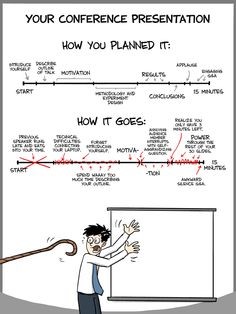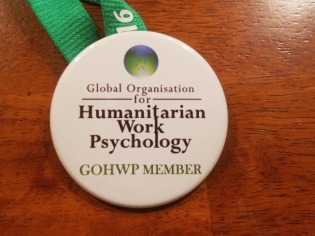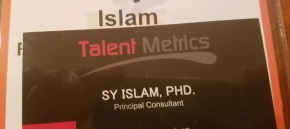I had almost forgotten to write my post SIOP 2016 thoughts until I came across this recent set of pictures from the 2016 conference . SIOP 2016 still feels like a whirlwind and while I made it to many sessions, I did not attend as many as I would have liked. Here are my thoughts after experiencing IO psychology’s biggest annual conference:
- Data science– Data science was one of the prominent themes at this year’s SIOP conference. I attended a number of sessions about machine learning, big data, deep learning and related topics. There seemed to be much concern among session attendees that IO psychology was falling behind in the area of statistics and data science. However, as David Morgan from Facebook stated it will take data scientists much longer to learn psychology then it will for IO psychologists to learn data science. Ultimately, big data and machine learning are newer techniques that IO psychology practitioners and academics are in a unique position to take advantage of. IO practitioners are poised to take the lead in workplace research. We just need to learn how to leverage these new tools and techniques to generate new insights.
- Translators– Many of the sessions I attended and many of the conversations that I had with friends, colleagues, and students were around the increased attention on our field. Whether that attention has come from the work of Lazlo Bock, Adam Grant, or the Re:Work initiative. This increased interest in our field means that we have a unique opportunity to effectively communicate the fundamental ideas of IO psychology to our students, clients, and stakeholders. Whether it was a panel on survey design, situational judgement tests, or data analytics, speakers focused on the importance of IO psychology practitioners’ ability to communicate to those outside of our field. There was great excitement about new journals such as Bowling Green’s Personnel Assessment and Decisions. This journal’s primary objective is to bridge the gap between science, practitioners, and business stakeholders. The message from SIOP 2016 was clearer than ever: we must all advocate for evidence-based management.

- Technology– There were many panels on technological innovations that were shaping the way we have done traditional IO work. mobile pulse surveys, web-based simulations or e-learning we are finding new ways of using our methods and assessments. You couldn’t walk around the SIOP exhibition hall without seeing new and exciting tools for simulations or assessment centers. This is an exciting time to be in the field because we are able to collect data using these technologies which will ultimately help us develop even more robust tools and statistical techniques.
- ‘Classic’ Methodology– Even though we are seeing innovations in the amount of data, technology, and demand for IO services there was a sense at this year’s SIOP that we have to stay true to ourselves. That we need to remain true to what we know about selection, training, performance management, and organizational development. None of the technological innovations are changing what constitutes good science. Nor does it change our goals as IO psychology practitioners but the technology does expand our tool box and may help us become more efficient.

- Teaming up– If it’s good enough for the Avengers then its good enough for SIOP! It was wonderful to see that SHRM was a sponsor of this year’s conference. It was also exciting to hear about the many wonderful local IO groups that have been recently formed around the country. My local IO group, Metro, had a strong presence at the conference this year and I learned from some of my co-panelists about local IO groups in Dallas, DC, and Minnesota. These partnerships and organizations (at the local and national level) will only help to strengthen the field of IO psychology and help us make an even greater impact in the workplace. It’s great to see SIOP take such a leading role at recognizing the benefits of partnership and collaboration.

- The expanding scope of IO Psychology– When I first started studying IO psychology in 2007 I initially felt that our science’s only application could be found in corporate America. Over the years, I have learned otherwise. IO psychology’s principles of methodological rigor paired with evidence-based decision making can be found in the worlds of market research, program evaluation, and healthcare (just to name a few applications). One of the most exciting areas is the work of the Global Organization for Humanitarian Work Psychology. The GOHWP is a coalition of individuals from low- to high-income countries devoted to the field of humanitarian work psychology “whose purpose is to further the synthesis of organizational, industrial, work, and other areas of psychology with deliberate and organized efforts to enhance human welfare”. The GOHWP provides our field an opportunity to extend our science into unforeseen areas of practice. IO psychology has much to offer non-profit and governmental organizations. The work of the GOHWP includes expanding research into areas involving different samples (i.e. Nicaraguan garment workers) working in varied organizations (businesses, governments, and non-governmental organizations) and using research science to tackle real-world issues (i.e. employability, poverty). Talent Metrics proudly offers its services to local non-profit organizations in NY and Florida. GOHWP is a wonderful endeavor and it continues to grow year after year. Ashlee Hoffman, Dr. Stuart Carr, and Laura Sywulak of GOHWP lead a lively discussion at the GOHWP SIOP party. There are exciting Humanitarian Work Psychology initiatives happening at organizations like the UN (and other non-profit organizations) that will allow IO practitioners to expand their skillset. If you are a student looking for an opportunity to practice what you learned in class, a practitioner looking to try your hand at a new challenge, or an academic looking to conduct research in an exciting new area, humanitarian work psychology may have something to offer to you. Reach out to GOHPW on Twitter or at their website to get involved!

These are my takeaways from SIOP, but I would love to hear yours! The time period right after the conference is when I’m most energized and excited about the field. Please post them in the comments below or send me a message on Twitter at @IOSyIslam

This blog post has been cross-posted to the Talent Metrics blog
